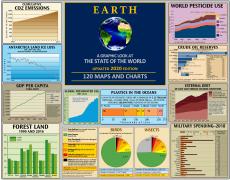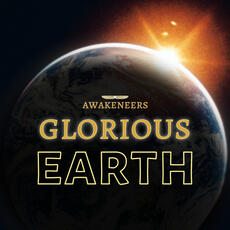Fresh Water
Only 2.5% of the world's water is fresh—the water on which the world's terrestrial life depends. Around 70% of this fresh water is frozen in ice or permafrost. How much is being used for what, and who has access to it?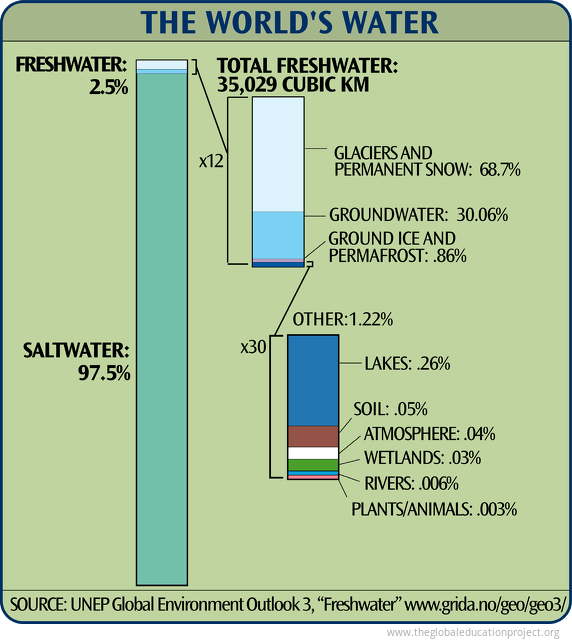
 Over 2 billion people live in countries experiencing high water stress.
Over 2 billion people live in countries experiencing high water stress. An estimated 4 billion people, nearly two-thirds of the world population, experience severe water scarcity during at least one month of the year. Growing use of water resources impacts sustainability, and creates a rising potential for conflicts among users.
Water use has been increasing worldwide by about 1% per year since the 1980s and is expected to increase by 20% to 30% until 2050. The increase is mainly occurring in developing countries and emerging economies. Per capita water use in most of these countries remains far below developed countries—they are merely catching up.
As the climate changes, dry areas will tend to become drier and wet areas wetter—exacerbating water stress in areas already the most affected. [1]
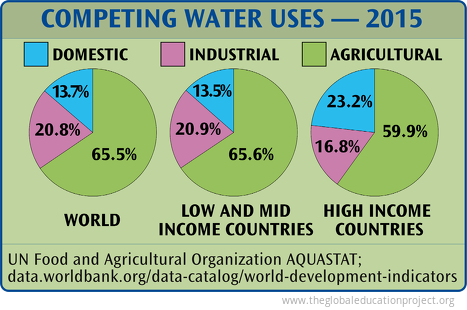
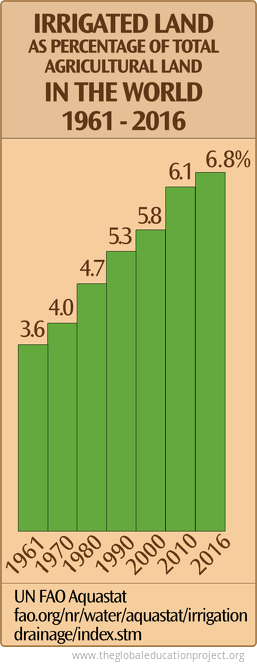
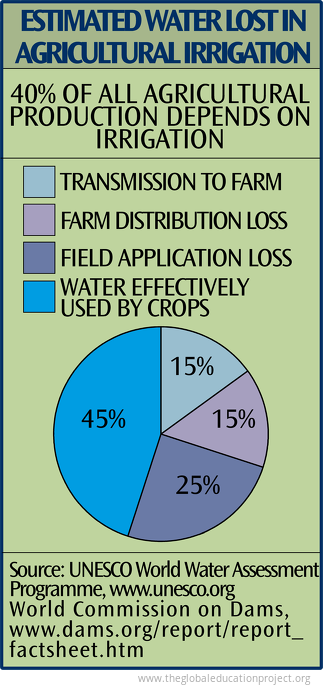
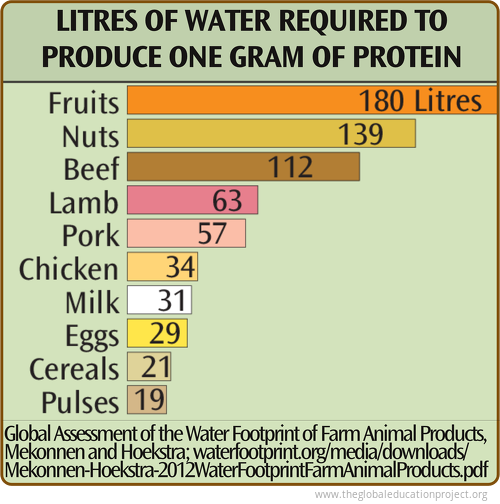
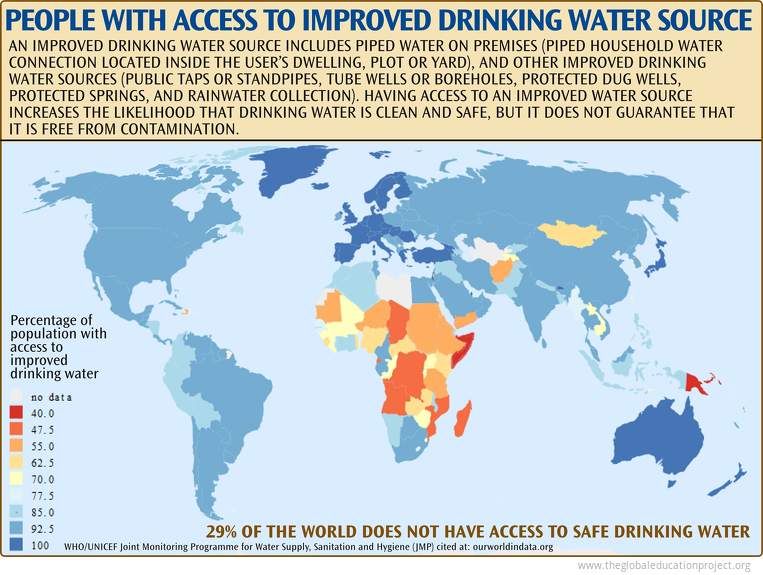
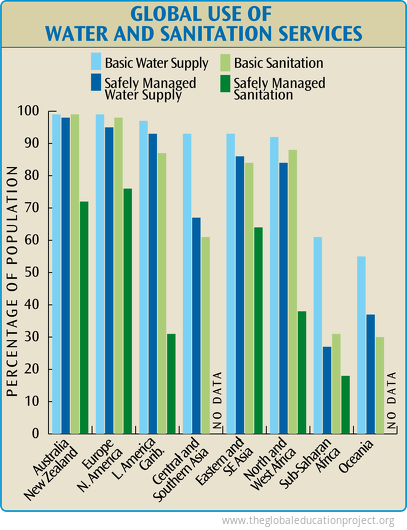 "90% of the developing world's waste water is still discharged untreated into local rivers and streams."
"90% of the developing world's waste water is still discharged untreated into local rivers and streams.""In 2015, an estimated 2.1 billion people lacked access to safely managed drinking water services and 4.5 billion lacked access to safely managed sanitation services."
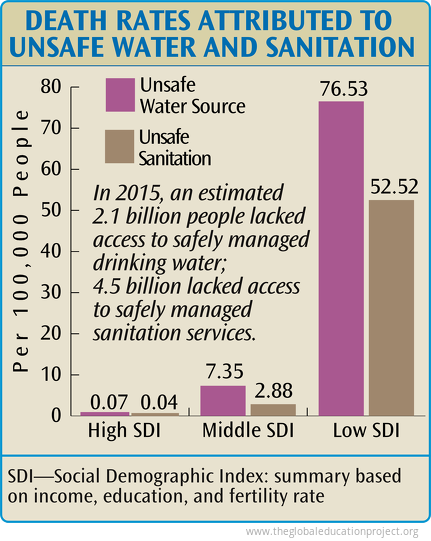
"About 90% of all natural disasters are water related...However, in terms of both the number of people affected and (especially) the number of people killed, the impacts of floods, droughts and conflicts are grossly outweighed by the number of those affected or killed by inadequate drinking water and sanitation services."
"Diseases due to poor drinking-water access, unimproved sanitation, and poor hygiene practices cause 4.0% of all deaths and 5.7% of all disability or ill health in the world."
Sources
Total World Water Chart:
UNEP Global Environment Outlook 3 "Freshwater"
Global Fresh Water Use 1901-2014 Chart:
Chart: Global International Geosphere-Biosphere Programme (IGB); cited at: ourworldindata.org/grapher/global-freshwater-use-over-the-long-run
1. The United Nations World Water Development Report 2019, "Leaving No One Behind"; https://en.unesco.org/themes/water-security/wwap/wwdr/2019
Competing Water Uses 2015 Chart:
UN Food and Agriculture Organization AQUASTAT; data.worldbank.org/data-catalog/world-development-indicators
Amount of Irrigated Agricultural Land in the World Chart:
UN FAO Aquastat; fao.org/nr/water/aquastat/irrigationdrainage/index.stm
Water Lost in Irrigation Chart:
UNESCO World Water Assessment Program
Water Required by Food Type Chart:
Global Assessment of the Water Footprint of Farm Animal Products, Mekonnen and Hoekstra; waterfootprint.org/media/downloads/
Mekonnen-Hoekstra-2012WaterFootprintFarmAnimalProducts.pdf
Percentage of Population With Reasonable Access to Safe Drinking Water Map:
WHO/UNICEF Joint Monitoring Programme for Water Supply, Sanitation and Hygiene (JMP) cited at: ourworldindata.org
Global Use of Water and Sanitation Services Chart:
WHO/UNICEF: Joint Monitoring Programme for Water Supply, Sanitation and Hygiene; 2017 data; www.washdata.org
Death from Unsafe Water and Sanitation Chart:
Global Burden of Disease Collaborative Network, 2017; cited at Our World in Data: ourworldindata.org
WHO/UNICEF: Joint Monitoring Programme for Water Supply, Sanitation and Hygiene; www.washdata.org
WHO, Health and sustainable development; www.who.int/sustainable-development/cities/health-risks/water-sanitation
Text:
UN World Water Development Report, 2019: www.unesco.org/water/wwap
WHO, Health and sustainable development; www.who.int/sustainable-development/cities/health-risks/water-sanitation
Tags: fresh water
Sign up for EARTH Dispatches
Enter you email below to get jaw dropping charts and maps delivered straight to your inbox.
Get the EARTH presentation
A 150 page high-resolution PDF containing all updated maps, charts and data on EARTH website; use as an information-packed educational slide show, printed booklet or a set of single-page handouts.
Learn More
